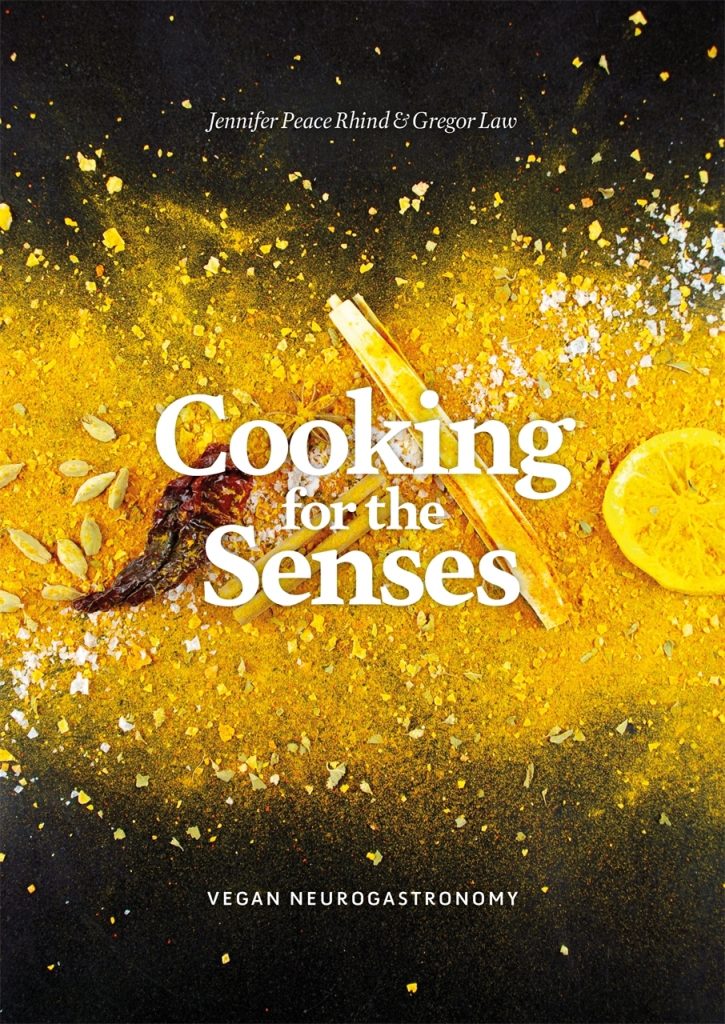By Jennifer Peace Rhind
 Neurogastronomy is a branch of neuroscience which explores how the brain perceives flavour. Now we might all agree that flavour is important to our wellbeing – it is at the heart of what we choose to eat, and indeed how much we eat. It determines whether our food satisfies us (or not) and it can bring enormous pleasure. It would also be fair to say that an understanding of flavour will influence how we approach food and cooking. Indeed, it can transform our time in the kitchen and the dishes that we prepare….
Neurogastronomy is a branch of neuroscience which explores how the brain perceives flavour. Now we might all agree that flavour is important to our wellbeing – it is at the heart of what we choose to eat, and indeed how much we eat. It determines whether our food satisfies us (or not) and it can bring enormous pleasure. It would also be fair to say that an understanding of flavour will influence how we approach food and cooking. Indeed, it can transform our time in the kitchen and the dishes that we prepare….
A few years ago I began to make the transition from vegetarian and occasional seafood eater to a plant based diet. In the kitchen I was immediately struck by the absence of my flavour staples – no more savoury parmesan, no more salty crumbly feta, no more unctuous mozzarella, and perhaps worst of all for me, no more Roquefort! At first I turned to my love of fresh herbs and pungent spices for inspiration, and looked for ingredients that could impart umami, that savoury flavour more often associated with roasted meat, poultry or fish. Then I came across Gordon Shepherd’s seminal work ‘Neurogastronomy’, and Harold McGee’s writings.
I learned that all of our senses – smell, taste, sight, hearing and touch – are involved in a complex interplay, sending signals to the brain which result in the perception of flavour. Probably our sense of smell is the most important. When we sniff an aroma, we are using our ‘orthonasal’ sense. When we ‘lose’ our sense of smell (when we have a cold, for example), we say that we cannot ‘taste’ food, but it is actually our perception of flavour that is diminished, because we can still identify tastes – ‘hot’ (such as chilli), salty, sweet, sour and bitter sensations. Our orthonasal sense is however only part of the picture. When you chew and then swallow a mouthful of food, the air from your mouth cavity is pushed up to the back of your nose and gives a different sensation – this is our ‘retronasal’ sense of smell, and it is unique to humans! So much for our tastebuds on the tongue and two types of smell – what about sight, touch and sound? We are very often guided by how we think something will taste by how it looks – hence the saying that ‘we eat with our eyes’. Our sense of touch gives us ‘mouthfeel’ – so we can appreciate the texture of our food. We also need to acknowledge the importance of sounds, including the internally generated crunching and chewing noises, which are also closely linked with our perceptions of food textures. Of course, external factors play a part too; while we are cooking and eating, we will also be affected by ambience, noises, music, colours, lighting, pressures of time, company – even the way our food is plated up and served will influence our perception of flavour. Food preparation, cooking and eating are the only activities where we can consciously and actively use all of our senses!
Once neurogastronomy is embedded in our psyche, we are free to explore the whole world of flavour with greater awareness and insight. I became especially interested in flavour chemistry, and I was excited to learn why traditional cuisines and herb and spice combinations are so very successful, and keen to investigate how we could apply this to plant based cuisine. Plant based diets are becoming popular for both health and ethical reasons, and recipes are becoming increasingly sophisticated, reflecting this new way of eating. Could neurogastronomy raise the bar? I approached Greg with these thoughts and ideas – and ‘Cooking for the Senses – Vegan Neurogastronomy’ is the result. The dishes he created are truly delicious and flavoursome. I can safely say that understanding flavour and educating the palate can bring a heightened awareness in the kitchen and at the table, and allowed me to embrace my new lifestyle with confidence and joy.
You might be wondering about umami, the so called fifth taste? It is given by an amino acid called glutamic acid and its salts, and their synergistic interactions with other nucleotides. Did I find it? Yes, in abundance! Umami seasonings from the plant world include shoyu, tamari and miso, Marmite, yeast extract, nutritional yeast, tomato ketchup, black garlic, mushroom salt and seaweed (try seaweed salt if the real thing doesn’t appeal). Ingredients such as fresh raw apples, carrots, raw tomatoes (and the semi-dried and cooked versions), potatoes, mushrooms (notably oyster and shitake), dried mushrooms (notably porcini), green asparagus, green peas, spinach, lentils, almonds, walnuts and traditionally leavened breads all contain umami components and which will enhance any dishes that contain them. I haven’t looked back!
Cooking for the Senses presents a new way of looking at food and flavour, and explores the senses through over 100 plant-based recipes to help you maximise flavour in your kitchen. You can read more about the food, or purchase a copy here.
If you would like to read more articles like this and hear the latest news and offers on our books, why not join our mailing list? We can send information by email or post as you prefer, and please also tell us about your areas of interest so we can send the most relevant information. You can unsubscribe at any time.